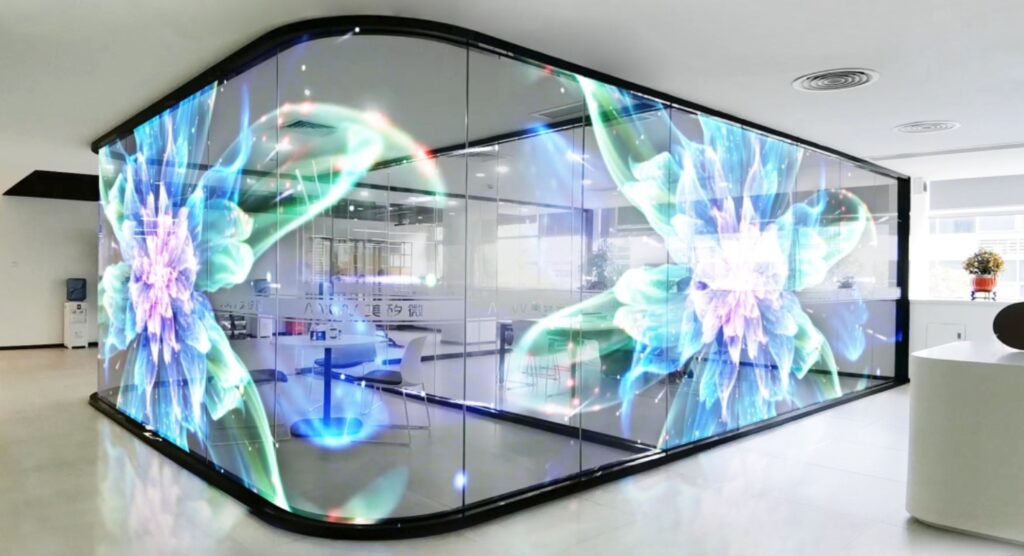Your guide to choosing the right signage solution for every environment
What is Digital Signage?
Digital signage refers to electronic displays that showcase multimedia content such as images, videos, and real-time information in public or private environments. Unlike traditional static signs, digital signage can be updated remotely, scheduled for different times of day, and tailored for specific audiences. Common applications include advertising, wayfinding, information sharing, and enhancing customer engagement.

What are the Key Components of a Digital Signage System?
A digital signage system consists of several core components working in concert:
- Display Types: LCD, LED, and SoC (System-on-Chip) screens are common. LCD displays offer sharp images and are widely available. LED displays are known for vibrant colors and high brightness, making them suitable for outdoor use. SoC displays integrate the processing unit within the screen, eliminating the need for external media players.
- Content Management System (CMS): A CMS platform allows users to upload, schedule, and manage content across a network of displays. It can be cloud-based or installed on-premises, supporting various formats and real-time updates.
- Media Players: Devices that decode and play content on the display. Some displays have built-in media players (SoC), simplifying setup and reducing hardware requirements.
- Network Setup: Digital signage systems connect to a local network or the Internet for remote management and content delivery. This can be achieved through wired Ethernet or wireless connections.
- Brightness Specifications: Measured in nits, brightness determines visibility in different environments. Indoor screens typically range from 300–700 nits, while outdoor displays may require over 2,000 nits for sunlight readability.
- Orientation Types: Displays can be installed in portrait or landscape orientation, depending on the content and space constraints.
- Scheduling Tools: These tools empower users to plan when and what content is displayed, allowing for targeted messaging at different times or for different audiences.
Digital Signage vs Traditional Signage vs Transparent LED Displays
How does digital signage compare with traditional signage?
Traditional signage, such as printed banners and posters, is static and cannot be updated without physical replacement. Digital signage, in contrast, is dynamic and can be changed instantly via software. This flexibility saves time and reduces recurring costs for reprinting. Digital signage also supports multimedia and interactive content, improving audience engagement.

What are transparent LED displays, and how do they differ technically?
Transparent LED displays use light-emitting diodes arranged in a grid on a transparent substrate, allowing viewers to see through the screen. This technology enables high-impact visuals without obstructing the view behind the display, making it ideal for glass façades, retail windows, and lobbies. Transparent LEDs typically offer lower contrast and resolution than traditional LED displays, but their unique see-through effect is a powerful design feature.
How do brightness, contrast, and resolution vary among these options?
- Traditional Signage: Dependent on print quality and lighting conditions. Not suitable for dynamic content or varying ambient light.
- Digital Signage (LCD/LED): High brightness (up to 2,000+ nits for outdoor LEDs), excellent contrast, and resolutions from HD to 4K and beyond. Well suited for both indoor and outdoor environments.
- Transparent LED Displays: Brightness ranges from 1,000–7,000 nits depending on the product. Light transparency can reach over 80 percent, allowing maximum natural light penetration. Resolution is generally lower, but graphics remain impactful at large scales.
Which industries and locations benefit most from each signage type?
- Traditional Signage: Best suited for static, long-term messages in low-traffic environments where updates are infrequent. Examples: building directories, historical sites, and small businesses.
- Digital Signage: Ideal for environments requiring frequent updates, real-time information, or interactive content. These include commercial spaces, retail stores, quick-service restaurants, airports, transport hubs, stadiums, educational institutions, and healthcare facilities.
- Transparent LED Displays: Excellent for locations where aesthetics and openness are priorities, such as luxury retail storefronts, automotive showrooms, large glass-walled lobbies, and event spaces. They are also becoming popular in airports and stadiums for advertising without blocking light or views.
How Does Digital Signage Solve Common Communication Problems?
Digital signage addresses several communication challenges in high-traffic public spaces:
- Real-time updates: Flight changes, gate assignments, and emergency messages in airports and transport hubs can be displayed instantly.
- Wayfinding: Interactive maps and directories help visitors navigate large venues like stadiums and campuses efficiently.
- Dynamic advertising: Retailers can promote flash sales or new products with timely, engaging visuals, boosting sales and customer engagement.
- Event management: In stadiums, digital signage provides schedules, athlete introductions, safety notices, and live game statistics, enhancing the visitor experience.
What Should I Consider When Choosing a Digital Signage System?
- Location and Lighting: Outdoor or sunlit environments require high-brightness LED displays. Indoor settings may do well with LCD or SoC screens.
- Audience: High-traffic areas like airports and stadiums benefit from large, robust displays and strong content management tools. Retail stores may use a mix of digital and transparent displays for eye-catching storefronts and in-store promotions.
- Content Needs: If frequent updates or interactive features are necessary, ensure the CMS is user-friendly and supports various media types. For static messaging, traditional signage may suffice.
- Infrastructure: Consider network capabilities, mounting options, and power requirements for the chosen display type.
- Budget: Transparent LED displays tend to be more expensive due to their specialized technology, while LCD/LED and SoC displays offer a range of price points to suit different budgets.
Conclusion
Digital signage has transformed the way information and advertising are delivered across diverse industries and locations. While traditional signage remains relevant for some uses, the versatility and impact of digital displays, combined with advanced CMS platforms and scheduling tools, make them the preferred choice for environments that demand flexibility and dynamic messaging. Transparent LED displays add a new dimension in design-driven spaces, especially where maintaining visibility and light is important. Ultimately, the best solution depends on your specific needs, environment, and communication goals. Contact ATODE for more information and advice on your digital signage system.
